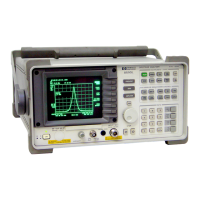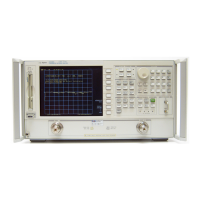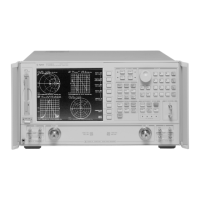How to Modulate a Signal Tunable Lasers
Agilent 8163A Lightwave Multimeter, Agilent 8164A Lightwave Measurement System, & Agilent 8166A Lightwave
Multichannel System, Fourth Edition
121
An absolute maximum of ±6 V can be applied as an external voltage to any BNC
connector.
Figure 78 shows how a TTL-level input signal modulates the optical output.
Digital modulation sets the frequency of the output signal.
To set the amplitude of the output signal, set the power parameter. This is the
maximum output power of the output signal; at the minimum output power, no
power is output.
To enable external digital modulation:
1 Move to the Tunable Laser channel and press [Details].
2 Move to [Mod Src] and press Enter.
3 Move to <External Digital> by using the cursor key, and press Enter. The text
ExtD appears in the Tunable Laser channel.
External Analog Modulation
External analog modulation uses a signal of up to 5 V
pp
. A 5 V
pp
signal causes
15% modulation of the power of the optical signal. Apply this signal to the input
BNC connector on the front panel of your Tunable Laser module.
CAUTION There are two BNC connectors on the front panel of the Agilent 81680A,
Agilent 81682A, and Agilent 81640A - a BNC input connector and a BNC output
connector.
There is one BNC connector on the front panel of the Agilent 81689A - a BNC
input connector.
An absolute maximum of ±6 V can be applied as an external voltage to any BNC
connector.
Figure 78 External Digital Modulation
t
TTL-level Input Signal
Input
Vo l t a g e
Output
Power
Optical
t
Optical Output Signal
